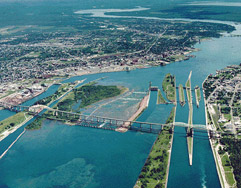Everything happens quickly at the federal level of government these days. It has become common to have numerous executive orders announced every few days. So, it seems fitting to look at what has changed, what is likely to change and what may be required in the coming months.
This column is written specifically for companies that transact business in the government sector and for public officials in governmental entities who are accountable for citizen services, public safety, affordable housing, the protection of public assets, clean water, adequate power, providing public education and healthcare options and more. And while this column is written by someone who has spent many years inside government and many years outside of government facilitating public and private sector partnerships, readers should remember that it is impossible for anyone to know for sure what to expect next from elected officials at the federal level of government in America. Big changes are happening.
Perhaps the most perplexing immediate change is the freezing of federal funding programs that were created with specific objectives and funding allocations by Congress before the new administration began. Many of the programs have been impacted through executive orders that either reduced the funding or put a freeze on the types of projects that can be funded. The most recent alarming announcement alerted public officials to planned audits on projects (even ones in progress) to ensure that certain new mandates are met, specifically mandates that meet the new administration’s plans. The following are examples of changes that have either already happened or may happen soon. A few noteworthy changes are noted and insight related to potential outcomes is provided.
Environmental Protection Agency (EPA): There is continual talk about shutting down the EPA. Conversations are ongoing as decisions are being made about transferring most disaster related responsibilities to the states. The Trump administration’s 2026 budget proposes a significant reduction in the EPA’s budget, cutting more than half of the agency’s funding. His proposals call for cuts in research, science, and all programs related to climate change, hazardous waste cleanup, and drinking water/wastewater infrastructure. With water resources, water purity concerns and the critical need for water infrastructure, there are many groups working against these suggested reductions.
Housing and Urban Development (HUD): This agency is best known for its focus on public housing and community development block grants funding. Significant cuts are outlined in President Trump’s proposed fiscal year 2026 budget. His cumulative cuts would reduce the budget by 44% and individual states would have the responsibility to work with the federal government on a state-based formula grant model, which would allow states to design their own rental assistance programs. Changes that could occur quickly would be a two-year limit on rental assistance for adults without disabilities. And although homelessness has increased by 18% in the last two years, the proposed HUD budget will decline 12% for assistance with homelessness programs if passed by the administration’s proposal. The proposed budget zeros out all funds for Community Development Block Grants (CDBG) and the HOME program. It cuts $3.3 billion from CDBG and $1.2 billion from HOME—both programs that are extensively used for rural areas and small cities.
Public Health Funding: The most immediate focus for the Trump Administration, elected members of Congress and citizens-at-large is what will be the outcome to the Medicaid and Medicare programs. Many cuts to public health care programs have already been made and funding freezes have an impact on several health-related programs already—specifically funding for maternal and child health, substance abuse treatment and preventive health services. The administration’s 2026 budget proposes cuts to public health funding—a 26.2% from the previous year. The National Institutes of Health would see a budget cut of 40%. The Centers for Disease Control and Prevention (CDC) would see a 44% cut and the Department of Health and Human Services would get a 26.2% budget reduction. Other programs are also listed for proposed reductions.
Transportation: The administration has verbally supported infrastructure spending, and while the proposed 2026 budget includes some transportation infrastructure increases, it also requests cuts. A $500 million increase for Rail Safety and Infrastructure grants is proposed and the IIJA funding is suggested to remain in place. This program provides $108 billion for public transportation and competitive grants, and formula funding would also continue through the IIJA program. Funding would continue through most other established transportation programs and Amtrak’s funding will likely remain the same because the administration’s proposal suggests extending the existing funding levels. However, the proposed transportation budget cancels out $5.7 billion in funding for electric vehicle charger grant programs.
Military and Defense: The president’s team has already shifted some funding within the Department of Defense and is waiting to see if funding will be available for the Golden Dome for America missile defense system he is proposing. The administration has said that the security program would cost approximately $175 billion and could be operational possibly in under 5 years. His 2026 budget proposal asks for $25 billion for the Golden Dome effort. The overall proposed budget he is suggesting is $1.01 trillion for military and defense. Homeland Security is earmarked for a historic $175 billion investment.
Research Funding: Some of the largest budget cuts are proposed for various scientific research programs, and many funding programs have been dismantled for projects supporting the National Institutes of Health (NIH) and the National Science Foundation (NSF), impacting health and scientific research initiatives. Public universities, as well as private sector universities such as Harvard, have seen their research funding support ended, with no notice even though the research was ongoing in the middle of projects. The jury is out on what can be expected to be funding for research by the federal government in the future.
Federal Emergency Aid: Funding freezes, particularly in areas related to environmental protection and climate change, will have huge impacts on sustainability and resilience efforts. If, as has been suggested, the responsibilities of FEMA are handed off to the states, there would likely be immediate chaos. Very few states are prepared to take over those responsibilities and no state has allocated the kind of funding that would be required after a weather-related event. States experiencing extreme weather events, such as hurricanes, floods and wildfires, would be ill-prepared because of a lack of training and existing structure in place. FEMA has processes in place to handle emergencies, ongoing contracts with all types of providers, and warehouses ready to begin moving products immediately when there is an event. It would take time and effort to transfer all those processes to every state. The president’s proposed 2026 budget reduces FEMA’s grant programs by $646 million.
Education Funding: The question of whether the Department of Education agency will continue to exist is unanswered. The president has publicly stated that he hopes to abolish the agency and turn the responsibility over to the states. Massive cuts have been made to the agency’s budget and many long-term programs for low-income school districts and students from low-income families have been dropped. Increased funding for private sector schools has been increased. Funding for after-school programs, free breakfast food for eligible students and special education assistance has already been stopped.
So to conclude. There are some things to watch. Until something changes, the following advice may be useful. Although it is hard to project what government contracting and partnering may look like in the months to come, here are my initial thoughts:
- State and local governments will have many brand new types of contracting opportunities to offer;
- The opportunities to partner collaboratively with governmental agencies will be much greater at the state and local levels of government unless you are a defense contractor or an AI specialist;
- State and local governments will likely begin to view private sector investments in public projects much more attractively than has been the case in the past;
- Public officials, who are already stretched because of budget restraints, staffing shortages and new mandates will appreciate private-sector expertise in almost every area of service they provide; and
- Government partnerships will be more crucial than ever in the past. America’s global competitiveness, along with its economic vitality, hangs in the balance. And at every historic moment of great change, great collaboration between public and private sector partners has been the motivating force of successful outcomes.






 RSS Feed
RSS Feed